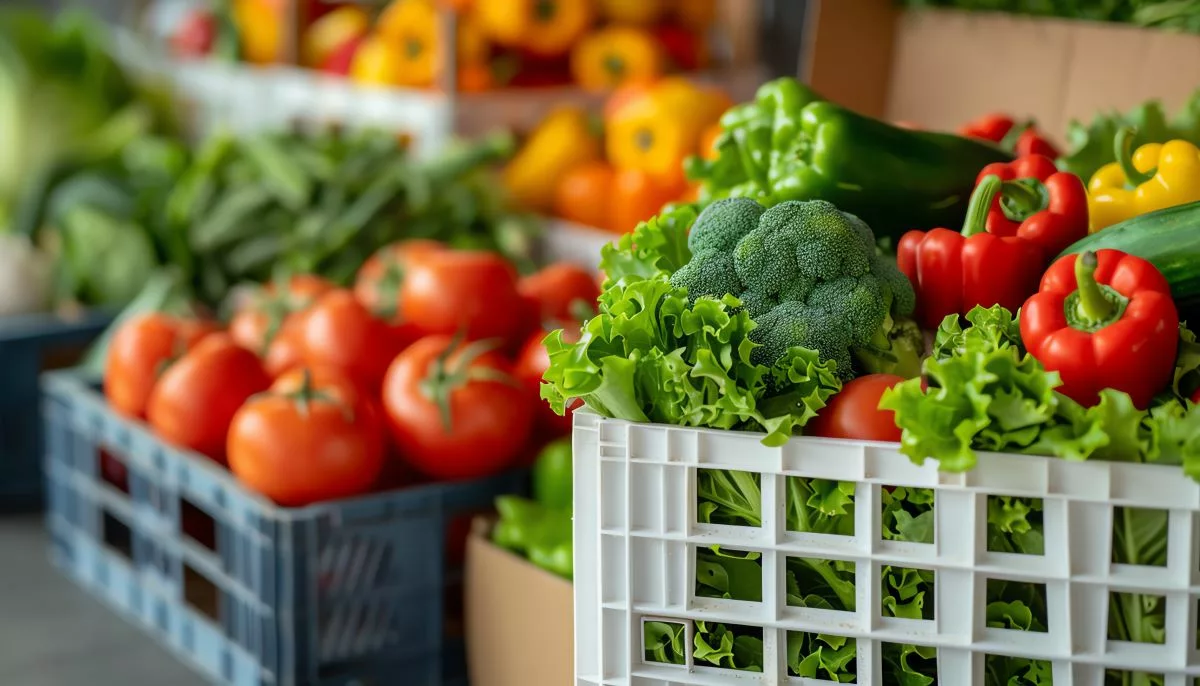Ensuring access to nutritious food for your family is a crucial priority. However, financial constraints can often hinder this essential aspect of well-being. Luckily, the federal government offers support through various benefits, including the Commodity Supplemental Food Program (CSFP).
In this article, we delve into the comprehensive details of the CSFP, shedding light on its purpose, eligibility criteria, the application process, and how to claim the invaluable benefits it offers.

- What Is the Commodity Supplemental Food Program?
- Benefits of CSFP
- Who Is Eligible?
- How To Apply
- Documentation Needed
- What Happens Next?
- How Long Do You Have To Wait?
- Can You Receive Other Food Benefits?
- What if Your Application Is Denied?
- Enhancing Nutritional Security
What Is the Commodity Supplemental Food Program?
The Commodity Supplemental Food Program (CSFP) is a government initiative that aims to improve the health and nutrition of low-income individuals over 60.
Administered by the U.S. Department of Agriculture (USDA), the CSFP works in partnership with state and local agencies and community-based organizations to distribute food packages to eligible participants. These packages supplement the diets of participants who may have limited resources and are at risk of nutritional deficiencies.
What’s the Difference Between the CSFP and SNAP?
The Commodity Supplemental Food Program (CSFP) and the Supplemental Nutrition Assistance Program (SNAP), commonly known as food stamps, are both government programs that aim to address food insecurity and improve access to nutritious food for low-income individuals and families. However, while there are similarities between the two programs, there are also some key differences:
| Commodity Supplemental Food Program (CSFP) | Supplemental Nutrition Assistance Program (SNAP) | |
| Benefit Structure | • CSFP provides monthly food packages directly to eligible participants• The USDA determines the contents of the packages and typically includes a variety of nutritious food items. | • SNAP provides eligible participants with an electronic benefit transfer (EBT) card that can be used to purchase food items at authorized retailers. • The amount of SNAP benefits received depends on factors such as household size, income, and expenses. |
| Eligibility | • CSFP focuses on specific target groups, such as low-income individuals over 60. | • SNAP, on the other hand, is available to a broader range of individuals and families who meet income and resource requirements. |
| Program Scope | • CSFP operates in select states and jurisdictions. • The availability of CSFP may vary depending on the location. | • SNAP is a nationwide program available in all states. |
It’s worth noting that individuals can be eligible for both CSFP and SNAP simultaneously, as the programs serve different purposes and have different target populations.
Benefits of CSFP
The Commodity Supplemental Food Program (CSFP) offers several benefits to eligible participants:
- Nutritious Food Assistance. CSFP provides monthly food packages that include a variety of nutritious food items. These packages typically include canned fruits and vegetables, proteins like meat and poultry, grains, dairy products, and more. By supplementing the diets of participants with wholesome food options, CSFP helps improve their nutritional intake and overall health.
- Improved Health and Well-being. By promoting healthy eating habits through nutritious food, CSFP contributes to participants’ overall health and well-being. Access to various foods supports better physical health, enhances energy levels, and assists in maintaining a healthy weight.
- Cost Savings. CSFP helps participants save money on their grocery bills, as the provided food items are free. This enables individuals and families with limited financial resources to allocate their funds toward other essential needs, such as housing, utilities, healthcare, or education.
Who Is Eligible?
To become eligible for this benefit, you must be:
- Over 60 years
- At or below the 130 percent of Federal poverty income guidelines
- At potential nutritional risk
Use the CSFP eligibility checker to determine your eligibility.
How To Apply
To apply for the CSFP, visit the Food Distribution Website and locate your local office. You can also run a Google search for “food commodities near me” for local results.
For more information, visit the Commodity Supplemental Food Program homepage. You can also email [email protected] or call 1-202-645-6087.
Documentation Needed
You will provide the following documents to apply for the CSFP:
- Proof of identity
- Proof of residency, such as lease agreement, utility bill, or current address
- Proof of income (including pay stubs and tax returns) or documentation that shows you are participating in other assistance programs
- Proof of age, such as a birth certificate, driver’s license, or government-issued ID
It is important to note that these are general guidelines, and the specific documentation required may vary. To ensure a smooth application process, it is recommended to contact your local CSFP agency or community-based organization for the most accurate and up-to-date information regarding required documentation in your area.
👉 Are you struggling to provide enough food for your household? Learn how the Emergency Food Assistance Program (TEFAP) can help you access essential groceries.
What Happens Next?
After you apply for the CSFP, the agency or local organization responsible for administering the program will review your application and the supporting documentation you provided. Based on the review of your application, the agency will determine whether you meet the eligibility requirements for CSFP. This may take some time, as it involves assessing your income and household size and meeting the specific criteria outlined by the program.
Once your eligibility has been determined, you will receive a notification regarding your application status. If you are deemed eligible for CSFP, the notification will inform you of your acceptance into the program.
After being accepted into CSFP, you will typically enroll in the program and receive monthly food packages. The specific distribution method and schedule will vary depending on the local CSFP agency or organization handling the program.
How Long Do You Have To Wait?
The waiting period for the Commodity Supplemental Food Program (CSFP) can vary depending on various factors. This includes the specific CSFP agency or local organization handling the program, the volume of applications received, and the time taken for application review and eligibility determination. Sometimes, you may receive notification of your eligibility status within a few weeks of submitting your application.
Can You Receive Other Food Benefits?
Yes, receiving other food benefits besides participating in the Commodity Supplemental Food Program (CSFP) is possible. They include:
- Supplemental Nutrition Assistance Program (SNAP), also known as food stamps
- Temporary Assistance for Needy Families
- Supplemental Security Income
- Restaurant Meals Program
What if Your Application Is Denied?
You will receive a denial notice if your application for this benefit is denied. The notice should outline the specific reasons for the denial. It could be due to exceeding income limits, failing to meet eligibility criteria or inadequate documentation.
If you believe there is no reason why your application should have been denied or there was an error in the evaluation, you can seek clarification and potentially appeal the decision. Contact the CSFP agency or organization responsible for processing your application to inquire about the appeals process and request a further explanation regarding the denial.
Enhancing Nutritional Security
The Commodity Supplemental Food Program (CSFP) is a vital resource for eligible individuals and families, providing nutritious food assistance and addressing food insecurity in the United States. Through the monthly provision of food packages, CSFP contributes to improved health, well-being, and financial stability for low-income individuals over 60.
While CSFP offers significant benefits, it is important to note that eligibility and application processes may vary depending on the location and administrative procedures. To make the most of this program, ensure you gather the required documentation and follow the guidelines set forth by the CSFP agency or local organization in your area.”





